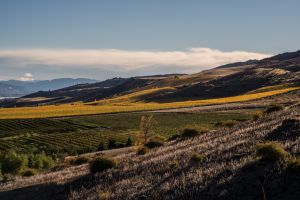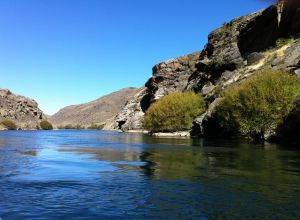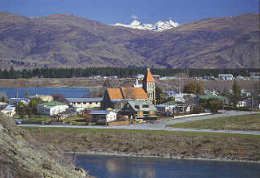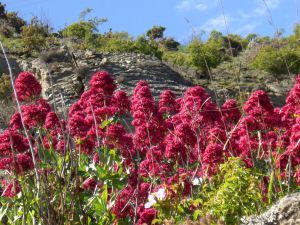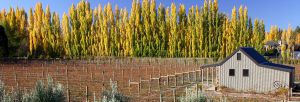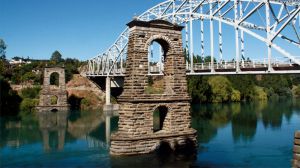The area of Central Otago consists of an inland region as well as a wide and varied landscapes of snow capped Mountains, Ravines, Deep Gorges and Pristine Blue and clear Rivers.
Central Otago Region was back in the 1860's known as Gold Country where many hard working men fortunes in the Gold Mines. The region has kept its Golden Heritage alive with preserved Stone Cottages and Historic Buildings.
You are sure of a warm welcome in the towns throughout Otago and where you can enjoy outdoor sports such as Fishing, Mountain Biking, Hiking and walking Trails. To Boutique and Award Winning Wineries where you can sample our stunning Point Noir's wines that this region is particularly famous for.
The Central Otago Rail Trail is an old Railway built between 1891 and the year 1907 and today is one of New Zealand's Greatest Ride. On route you pass more than 20 Local communities and Otago Towns
The towns of Alexander, Clyde, Ranfully, Cromwell and Roxburgh are all perfect places to base yourself and explore all that the Otago all are suited to being a base in which to explore the region. In the summer the weather in this region is often in the high 30's, which often tops the New Zealand heat charts for the hottest place in Aoteroa..
Sub Regions
Cromwell
Cromwell is situated on Lake Dunstan and although today is a modern town in the past its History comes from the 1800's and the Gold Rush of the era. Visit the Old Cromwell Town to learn of the towns past history.
The Clyde Dam was constructed and finished in 1992 and the town went through a major transformation as a result with a local valley being flooded, leaving the former and historic business district at the bottom of the now Lake Dunstan. Today Cromwell is a vibrant and bustling service town and located on Lake Dunstan.
Clyde
Clyde is an historic town located at the on a river gorge, surround by hills with stunning variation of colours. Schist is found in this area and comes from large rocks that bear gold elements that well sparked the 1800's Gold Rush of the region.
The area has a Micro Climate and is one of the reason why early settlers with the hot summers and milder spring weather chose to make this place their home,
Clyde today offers visitors a great cafes and restaurants to enjoy locally inspired Cuisine and of course there is the wine of the Otago Region to accompany each course.
Clyde has well preserved heritage buildings, which are always a joy to see.
The towns name was originally called Dunstan and lays alongside the Clutha River and is also the start of the of The Otago Rail Trail were you can experience some great landscapes. Of course is the finish of the Rail Trail as well.
There is a Hydro Electirc Dam on the Clutha River and the hydro electric dam.
Alexandra
Alexandra is situated on the joining of the Manuherika and Clutha Rivers and located in a region of dramatic change in the seasons, which bring with them a beautiful array of colours. Photographers love the almost moon like appearance that allows them to capture stunning images. There are many local fruit farms, which delight visitors along with visits to our local Wineries.
The Alexander to Clyde River Track is a Favourite with visitors to be able to enjoyt the best of the stunning landscapes of the region.


